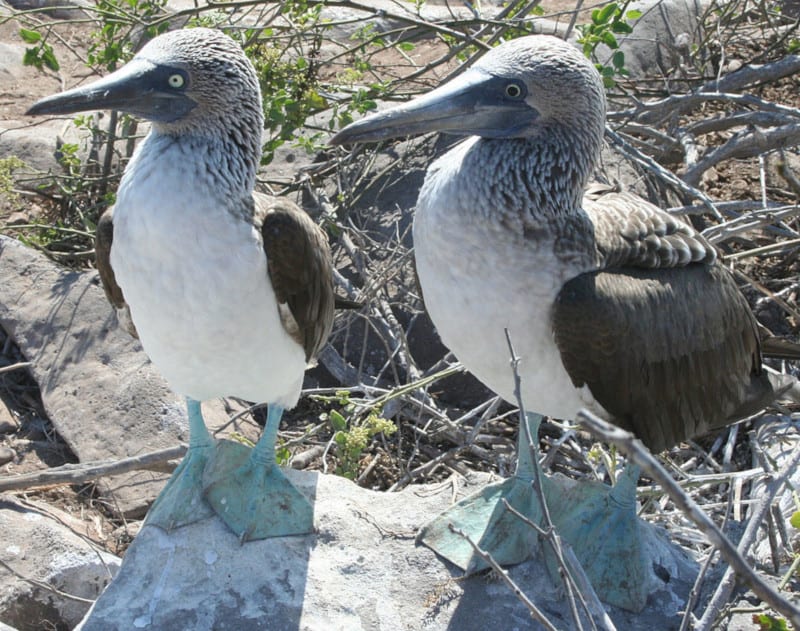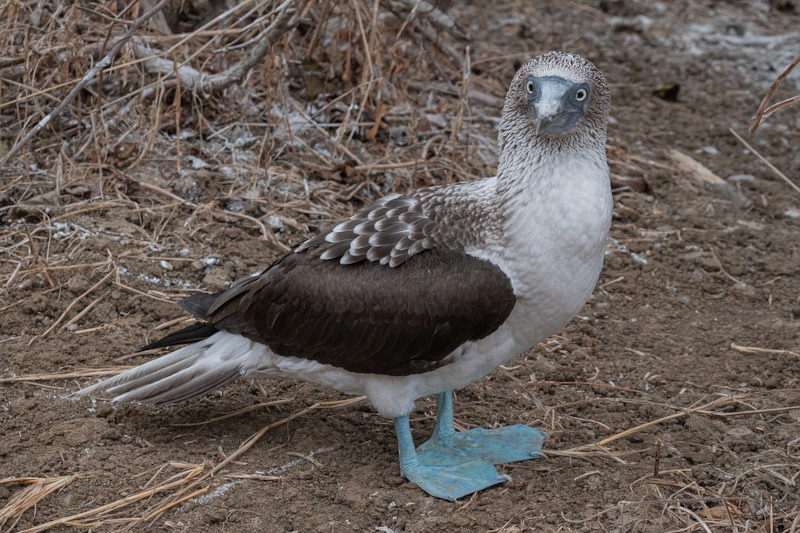Blue Footed Booby Facts
- The highly distinctive term of Blue Footed Booby easily serves as the most frequently used named for this eye-catching wing-wonder. There actually aren’t any other consistently used general titles for the bird. Though uncommon, it’s not unknown.
- Within the scientific community, however, it’s likely better known by its technical appellation. Fortunately for the layperson, that’s a much more pronounceable tag than most such designations. That’s because it holds the official epithet Sula nebouxii.
- The intriguing animal received that tag due to the efforts of Alphonse Milne-Edwards. The respected French ornithologist accomplished the first recognition of it as a separate and distinct species. He achieved that scientifically noteworthy deed in 1882.
- It’s worth noting, though, that researchers currently recognize a total of two subspecies of this avian. Originally believed to be a single species, science later separated the original, single species into two groups. This division took place in the year 1948.
- Thankfully, the unusual Blue Footed Booby seems to be maintaining a population base that’s both stable and sufficient. That pleasant state also appears to hold true across the entirety of its range. The IUCN thus presently list the bird as Least Concern.
- It nevertheless still faces the same potential threats to its continued existence as all forms of life on the earth today. Most of those perils stem from the actions of mankind. Among them are the related dangers of habitat loss and ongoing climate change.
Related Articles
Blue Footed Booby Physical Description
The intriguingly-named Blue Footed Booby never seems to fail to grab the attention of those who encounter it. The reason for that clearly stands out, of course, in its remarkably-hued feet. Yet, Nature also blessed it with its own appeal in other numerous ways, too.
In terms of physical statistics, the animal follows a pattern common to many creatures around the globe. That’s the fact that it demonstrates a certain degree of the physiological characteristic of sexual dimorphism. In its case, this trait manifests in terms of size.
Overall, it’s a medium to large-sized bird, with males of the species usually larger than females. The difference remains minor, though. On average, the fascinating bird measures around 32 – 33 in (81 -85 cm) in length and weighs between 3.3 – 5.5 lbs (1.5 – 2.5 kgs).
The general coloring of this masterpiece of evolution varies slightly among individuals, but basic patterns remain the same. Its body presents a predominantly white shade, while the wings typically manifest various shades of brown. The head also shows a mottled brown.
It’s the feet of the aptly-named Blue Footed Booby, though, that garner the most attention. And that’s for good reason. These features present a dazzling, vibrant turquoise blue color. The intensity of this shade, coincidentally, tends to reflect the overall health of the bird.
A few more traits still remain to pique the interest of the observer. The aforementioned wings possess a distinctive long, pointed design. Its tail likewise develops as lengthy a tapering in shape. The animal also has relatively large, bright eyes near the front of its head.
- Kingdom: Animalia
- Phylum: Chordata
- Class: Aves
- Order: Suliformes
- Family: Sulidae
- Genus: Sula
- Species: S. nebouxi
Blue Footed Booby Distribution, Habitat, and Ecology
The eye-catching Blue Footed Booby seems to have developed as indigenous to a moderately restricted, as well as specific, section of the surface of the earth. The precise location of this zone of habitation, however, might come as a surprise to some of you.
That’s because it primarily appears along the western coasts of Central and South America. There, the bird resides mainly in countries such as Ecuador, Peru, Colombia, and Panama. Yet, it’s perhaps best known for its abundant population in the beautiful Galapagos Islands.
Like its known relatives, this wonder of Nature evolved very specific preferences regarding its choice of habitat. That’s due to the fact that it’s strictly a marine species of avian. It only requires land for the purposes of breeding and the rearing of the its young.
Within its habitat zone, the animal inhabits both tropical and subtropical regions. There, it particularly favors rocky shores, cliffs, and islands where it can nest and breed. These birds are also frequently spotted in areas with nutrient-rich waters, for feeding purposes.
The amazing Blue Footed Booby hunt as highly skilled divers. The birds primarily feed on fish, particularly anchovies and sardines, as well as the occasional squid. It hunts by diving from the air, sometimes diving from heights of up to 100 ft (30 m) to catch its prey.
The adults themselves have few natural predators. Their young, however, often fall victim to introduced species such as rats, cats, and dogs. An average lifespan varies, depending on many factors, of course. On average, though, individuals typically live between 10-15 years.
It’s also known for its elaborate courtship displays, often involving the male showing off his feet. Once paired, they typically nest in colonies on islands or coastal cliffs. The female lays two or three eggs, and both take turns incubating them and caring for the chicks.
Species Sharing Its Range
Check out our other articles on Incredible Sharks of the World, Korean Fir, Gocta Cataracts, Red Veined Darter, Polar Bear, Black Rain Frog, Yosemite Cave Pseudoscorpion, Jewelled Gecko


